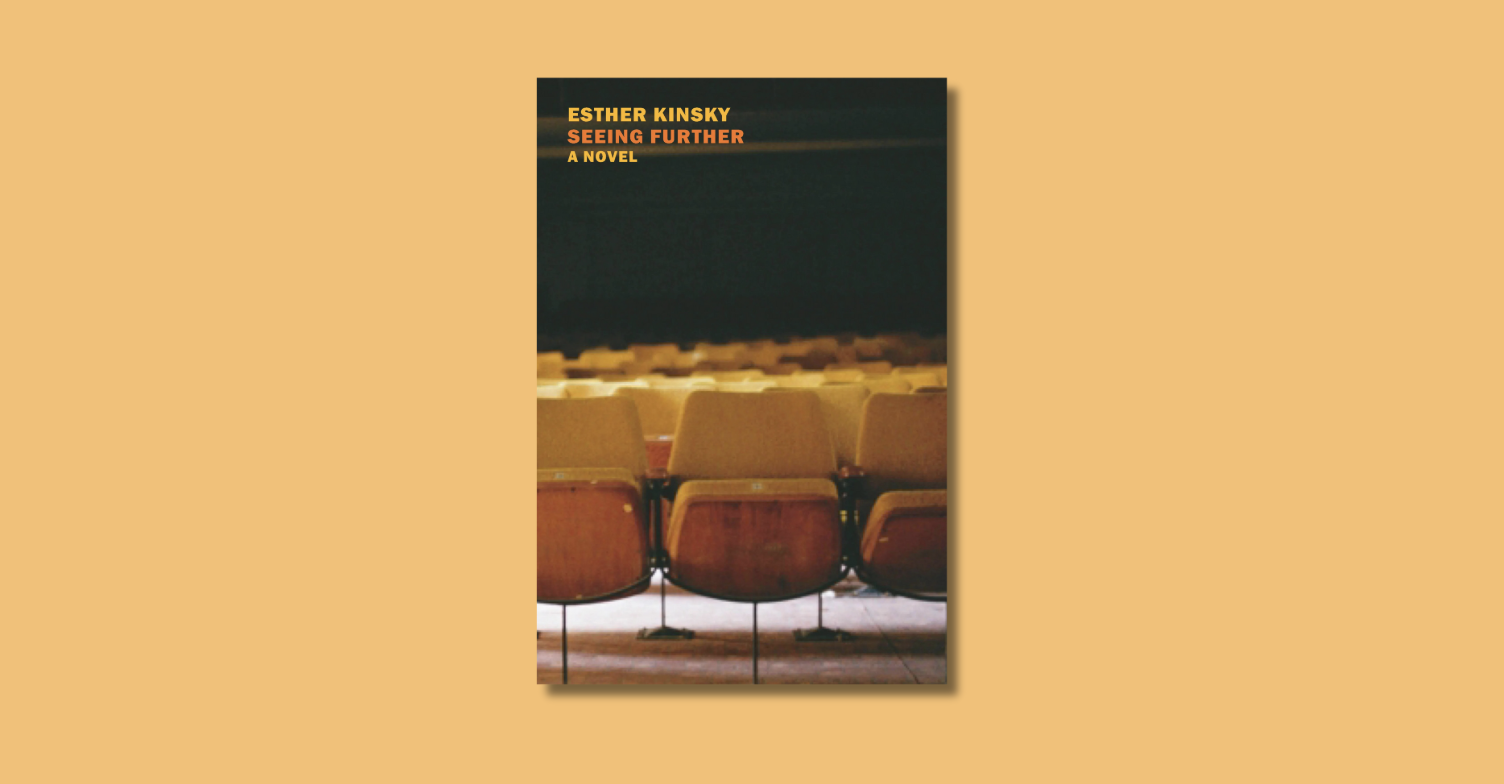
1.

 In Dan Chaon‘s story “Prodigal,” from his collection Among the Missing, the narrator says: “When I was young, I used to identify with those precociously perceptive child narrators one finds in books. You know the type. They always have big dark eyes. They observe poetic details, clear-sighted, very sensitive… Now that I have children of my own… I think of that gentle, dewy-eyed first person narrator and it makes my skin crawl.”
In Dan Chaon‘s story “Prodigal,” from his collection Among the Missing, the narrator says: “When I was young, I used to identify with those precociously perceptive child narrators one finds in books. You know the type. They always have big dark eyes. They observe poetic details, clear-sighted, very sensitive… Now that I have children of my own… I think of that gentle, dewy-eyed first person narrator and it makes my skin crawl.”
A New York Times review of the recent novel Mercury Under My Tongue praised the book by saying of its protagonist, “Fortunately, unlike the precocious child narrators that populate so much fiction, there isn’t a whiff of gee-whiz wonderment or innocence about him.”
I love precocious narrators. Of course the child narrator is not a new construct, but some of the most buzzed-about novels of the 2000s, such as Jonathan Safran Foer’s Extremely Loud and Incredibly Close and Marisha Pessl’s Special Topics in Calamity Physics, have featured memorable young leads. The books have met with both exuberant acclaim and accusations of being cloying, gimmicky, mannered, precious, faux-innocent, forced, unbelievable, exasperating, show-offy, or just plain annoying. But I admire the books’ inventiveness, and I love the characters’ idiosyncratic voices, unapologetic intelligence and bold curiosity. And, like Chaon’s narrator, and probably like many lifelong readers, I see a bit of myself in them.
2.





With so many precocious children and their quirks to keep track of, here is a guide to some of the genre’s recent standouts:
Extremely Loud and Incredibly Close: Oskar Schell, 9, “inventor, jewelry designer, jewelry fabricator, amateur entomologist, Francophile, vegan, origamist, pacifist, percussionist, amateur astronomer, computer consultant, amateur archaeologist, collector.” Having found a key left behind by his father, who died in the 9/11 attacks, Oskar sets out to find the lock.
Special Topics in Calamity Physics: Blue van Meer, 16, who never met a simile, metaphor, parenthetical quip, reference, citation, or Strategic Capitalization she didn’t like. Her mother died in a car accident; Dad is a brilliant, nomadic, and pompous professor.
Mark Haddon’s The Curious Incident of the Dog in the Night-Time: Christopher Boone, 15, autistic and mathematically gifted. A fan of Sherlock Holmes and The Hound of the Baskervilles, he investigates who killed his neighbor’s dog, and uncovers the truth about his mother’s death.
Nicole Krauss’ The History of Love: Alma Singer, 14, who keeps a notebook called “How to Survive in the Wild” inspired by her adventurous father, who died of cancer. She is trying to find the author of an old novel that her mother is translating.
Reif Larsen’s The Selected Works of T.S. Spivet: T.S. Spivet, 12, a cartography genius traveling by train, alone, from a Montana ranch to Washington, DC, to accept an award at the Smithsonian.
3.
In each of these books, told in first-person, voice is central. Reviewers often remark that the protagonists sound nothing like a “real” child or teenager. But aside from Curious Incident, which is meant to be a feat of channeling—this is how the world looks through the eyes and brain of an autistic boy—reality and fidelity are not of primary concern. Lacking much real-world and life experience, the characters filter their lives through film noir, cowboy movies, detective stories, Jewish mysticism, novels and history.
As T.S. says before beginning his train journey, “I guess I was a sucker for historical myth just like Father. But whereas his Spiral of Nostalgic Unfulfillment was directed at the cinematic West of the trail drive, one need only whisper the phrase ‘bustling railroad town’ to raise my blood pressure a notch.” Alma’s hero is the aviator and writer Antoine de Saint-Exupéry, who disappeared during WWII. Blue describes Hannah Schneider, the film teacher whose mysterious death fuels the book’s plot, as straight out of a black and white classic:
She had an elegant sort of romantic, bone-sculpted face, one that took well to both shadows and light… Within her carriage… was a little bit of the Paramount lot, a little neat scotch and air kisses at Ciro’s. I felt, when she opened her mouth, she wouldn’t utter the crumbly speak of modernity, but would use moist words like beau, top drawer and sound (only occasionally ring-a-ding-ding).
 These influences from previous eras create an internal logic for each book. The trick is similar to that of the movie Brick, which transported the conventions of ‘30s detective fiction to a Southern California high school. Would a high schooler say “No, bulls would gum it. They’d flash their dusty standards at the wide-eyes and probably find some yegg to pin, probably even the right one”? Of course not. But as Salon’s Andrew O’Hehir wrote of the film, “it’s an engrossing fantasy picture that in some ways gets close to the feeling of teenage life, even though it bears almost no relationship to its reality.”
These influences from previous eras create an internal logic for each book. The trick is similar to that of the movie Brick, which transported the conventions of ‘30s detective fiction to a Southern California high school. Would a high schooler say “No, bulls would gum it. They’d flash their dusty standards at the wide-eyes and probably find some yegg to pin, probably even the right one”? Of course not. But as Salon’s Andrew O’Hehir wrote of the film, “it’s an engrossing fantasy picture that in some ways gets close to the feeling of teenage life, even though it bears almost no relationship to its reality.”
4.
For his Spring 2008 ready-to-wear collection, Marc Jacobs designed shoes that had squat heels jutting out backwards, horizontally, from the ball of the foot. I love shoes as much as I love reading, and found this pair quite special: Jacobs had managed to rearrange conventional elements into something whimsical, and expand the idea of what a shoe can be.
Most books fit within a remarkably limited format, but formal inventiveness is a salient trait of these novels. Like children, they don’t always follow the rules. The books include maps and diagrams in the margins; pages in color and marked up with a red correction pen; illustrations and photos; blank pages; pages with type so dense they’re unreadable; foot notes and citations; chapters named for classic books or numbered with increasing prime numbers; and codas of a mathematical proof (Curious Incident), a Final Exam (Special Topics), and a flip book (Extremely Loud). According to critics like B.R. Myers, whose article “A Bag of Tired Tricks” appeared in The Atlantic upon the publication of Extremely Loud, my enjoyment of such “spurious playfulness” makes me “easily amused.”
But I don’t see these flourishes as gratuitous examples of “look at me! I’m different and clever!” T.S. makes sense of the world through mapping, and as he deals with the recent death of his younger brother “during an accident with a gun in the barn that no one ever talked about,” the tragedy’s repercussions are fittingly explored in the margins. Christopher’s brain functions in an emotionally detached, logical/mathematical/schematic way that necessitates diagrams. I found Extremely Loud’s backwards-flipbook, in which photos show a leaping body rising upwards alongside one of the twin towers, a moving visualization of Oskar’s biggest wish. Plus, it’s simply fun to turn the page and find a picture. It’s a fitting throwback to children’s books, as well as a nod to the hyperlinked/sidebar-ed/multimedia texts we read, without fuss, online.
The playfulness extends to language. More than any book I can remember, Special Topics delights in inventive, extended description. Listen to Blue riff on a central character:
He was a Goodnight Moon (Brown, 1947). Goodnight Moons had duvet eyes, shadowy eyelids, a smile like a hammock and a silvered, sleepy countenance… Goodnight Moons could be male or female and were universally adored. Even teachers worshipped them. They looked to Goodnight Moons whenever they asked a question and even though they answered with a drowsy, wholly incorrect answer, the teacher would say, ‘Oh, wonderful.’
5.
None of the precocious narrators are Goodnight Moons. In fact, let’s call them The Outsiders (Hinton, 1967), though with less class warfare. They do not fit easily into the world. Aside from Alma’s Russian immigrant pen pal, none of them has a true friend his or her own age; professors, teachers, parents, grandparents and strangers to whom they write letters provide a tenuous social life. They are unpopular at school, lonely, awkward, weird.
I was not a 12-year-old cartography genius or pint-sized private eye, but I was an overachieving kid who took a while to figure out how to be smart without being an annoying show-off—a quality of precocious narrators that often bugs readers. I recently re-read the journal that I kept through high school, which was not all that long ago. The content breakdown is approximately 60% about boys, 30% about how lonely I felt, and 10% about how great I was doing on my AP physics tests. I had forgotten about the time I gossiped about how academically stupid my crush’s girlfriend was, and then he confronted me about it via AIM conversation. Which is to say, I really could have used a bookish friend like Alma or Blue. (And like Blue, whose father quizzes her on vocabulary and makes her perform readings of classic plays during long car trips, I had parent-assigned summer homework. I remember writing short reports about the book Cheaper by the Dozen and the sport of diving; homework earned points, which could be redeemed for sodas and CDs.)
The books also nimbly capture how, when brains trump social skills, you end up feeling both older and younger than everyone around you. Alma and Blue are clueless about boys and have disastrous first kisses, but are ambitious enough to unravel complicated mysteries. And that’s what’s heartbreaking about these books: they put smart kids in the position to feel like they can, and should, come up with answers to some of life’s biggest questions.
Because for all their cuteness, the novels are really about surviving death and loss. Several of the characters assemble literal survival kits, that include items like a telescope, compasses, drafting paper, duct tape, a stuffed animal, a snakebite kit, iodine pills, Swiss Army knives, a copy of Edible Plants and Flowers in North America, and Juicy Juice boxes. But what good is a compass or stuffed animal—where can you go, and what second-rate comfort will you find?—when you are a child whose parent or sibling has died?
6.
As a culture, we have an odd relationship with high-achieving youths. The media scrambles to cover four-year-old abstract artists, 12-year-old fashion bloggers, 13-year-olds who climb Mt. Everest—but we regard the little prodigies with a mix of admiration, disbelief, mistrust and even hostility. (Witness the backlash against some of the precociously talented young novelists themselves, like accusations that Pessl only got a book deal because she’s pretty, and the phenomenon of “Schadenfoer“; note the glee people are taking in mocking Krauss’ recent over-the-top blurb.)
The other day, I overheard a commercial advertising a contest that would reward “the fastest, most accurate texter.” Then I learned that Jersey Shore’s The Situation had inked a book deal.
In an age of shortening attention spans and the glorification of stupidity, I find it comforting and exciting to spend time with young characters for whom books, maps, notebooks, letters, research, drawings, imagined inventions and classic films are central and essential. Precocious narrators, and the ambitious novelists who create them, give me hope that our culture can keep evolving without sliding into Idiocracy, and stand as proof of the power of intelligence, imagination, curiosity, and even “gee-whiz wonderment.”
In The Selected Works of T.S. Spivet, T.S. coins the term “Stenpock,” after his science teacher, Mr. Stenpock. A Stenpock is someone “who insists on staying within the confines of his or her job title and harbors no passion for the offbeat or the incredible.” Precocious narrators are anti-Stenpocks, and I’m a sucker for them.
[Image credit: Inna]








